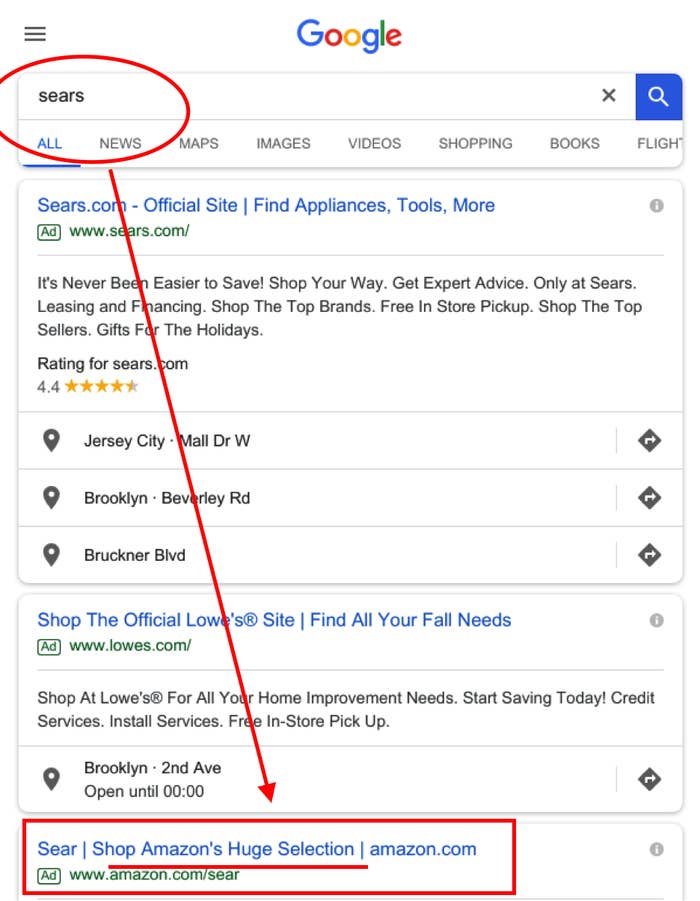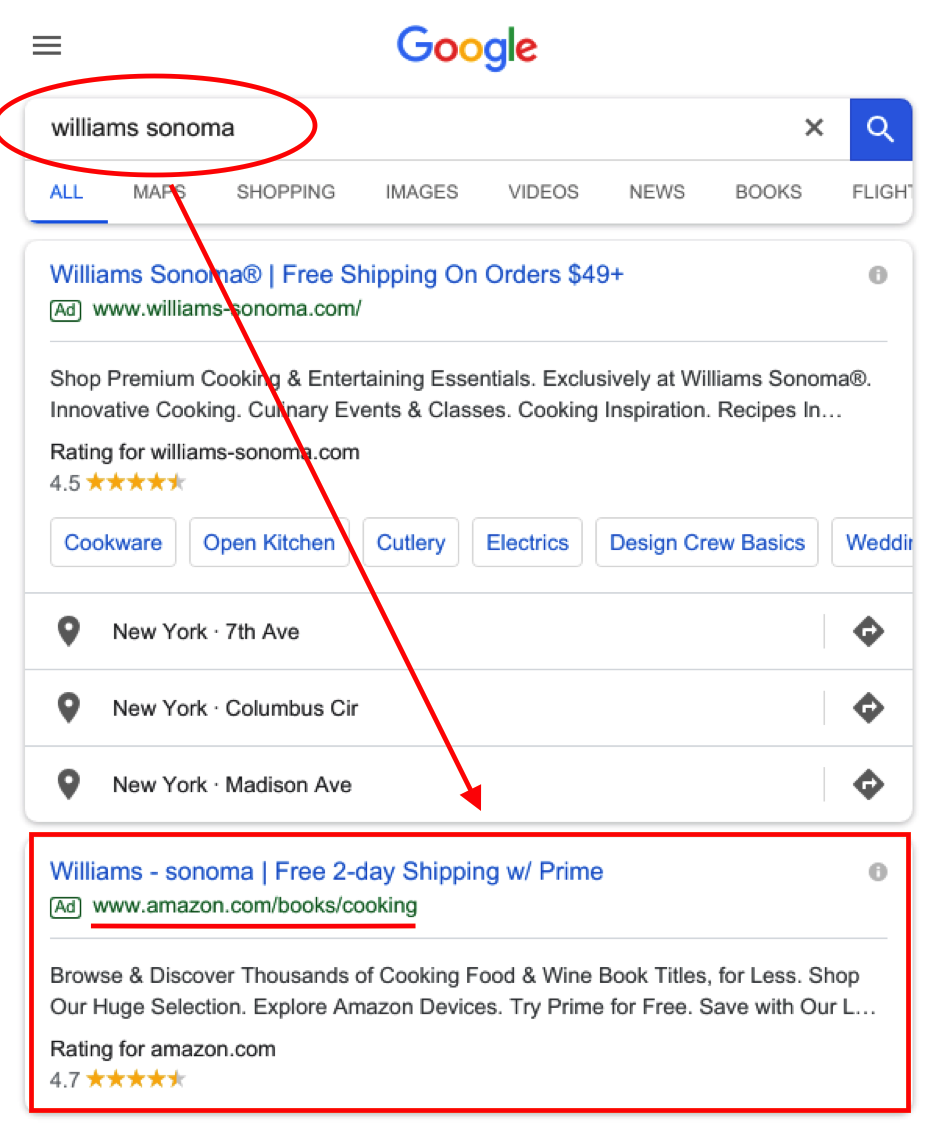
It may be a familiar result for avid online shoppers — an Amazon ad appears when you search for a totally different company. Type "Target" or "Walmart" into the Google search box and, along with the result for the thing you're actually looking for, there is an Amazon ad.
That's because Amazon and other companies engage in an ongoing bidding war for Google search ads targeted to the names of various retailers in an effort to win, or perhaps hijack, your click.
Over Black Friday weekend, retailers ramped up these efforts. But Amazon beat out the competition by bidding far more for competing search terms than it did its own name, according to competitive search analysis company Adthena.

Adthena reports that it found Amazon's brand bidding rate over Black Friday weekend came to 182.18%, meaning an Amazon ad was 1.8 times more likely to appear on a competitor's brand term — Wayfair, Walmart, Macy's — than in searches for Amazon itself.
The company's bidding rate peaked at 533% on Black Friday and at 550% on Cyber Monday, according to Adthena, which represents companies like Kohl's, Converse, Progressive, and Burberry.
While bidding on a competitor's name in Google ads is a common practice, Adthena's digital content strategist Patrick Hong told BuzzFeed News that Amazon's bidding rate is significantly higher than other retailers'. Lowe's was second-highest to appear on competitors' search terms, with a bidding rate of 57.7%; JCPenney came in third at 49.1%, according to the Adthena.
"If I search for Nike and I see an offer for a 30% sale on Adidas brands I might buy something there instead," he said. "Amazon is being quite disruptive in this sales period and trying to pick up on all kinds of queries."

Adthena's report comes as Amazon begins to dominate product searches over Google. It's becoming more common for online shoppers to begin and end their search and shopping on Amazon compared to Google, which used to lead the shopping search market. Nearly half — 47% — of US internet users said they started their product searches on Amazon compared with about 35% who went to Google first, according to a May 2018 survey by Adeptmind.
Another survey by Salsify published in February 2018 found 41% of internet users search and shop on Amazon while only 28% begin their search on Google then buy on Amazon.
Dave Naffziger, CEO of BrandVerity, told BuzzFeed News that Amazon may have such a high bidding rate because it already has such brand resonance that it doesn't need to bid on its own name.
"Amazon already owns that shelf space and they don't really need to add another ad in there to basically pay for a visit they’re likely to already receive," he said.
Google lifted a ban on competitors using trademarked ad words in June 2009, bringing it in line with other search engines like Bing. That meant retailers like Best Buy, or Amazon, are free to use competitors' names in ad copy.
"It’s a good strategy, I think, for Amazon," Lori Weiman, CEO of The Search Monitor, told BuzzFeed News. "You’re allowed to do that, so why wouldn't they? It’s a smart strategy."
Amazon declined to comment.
